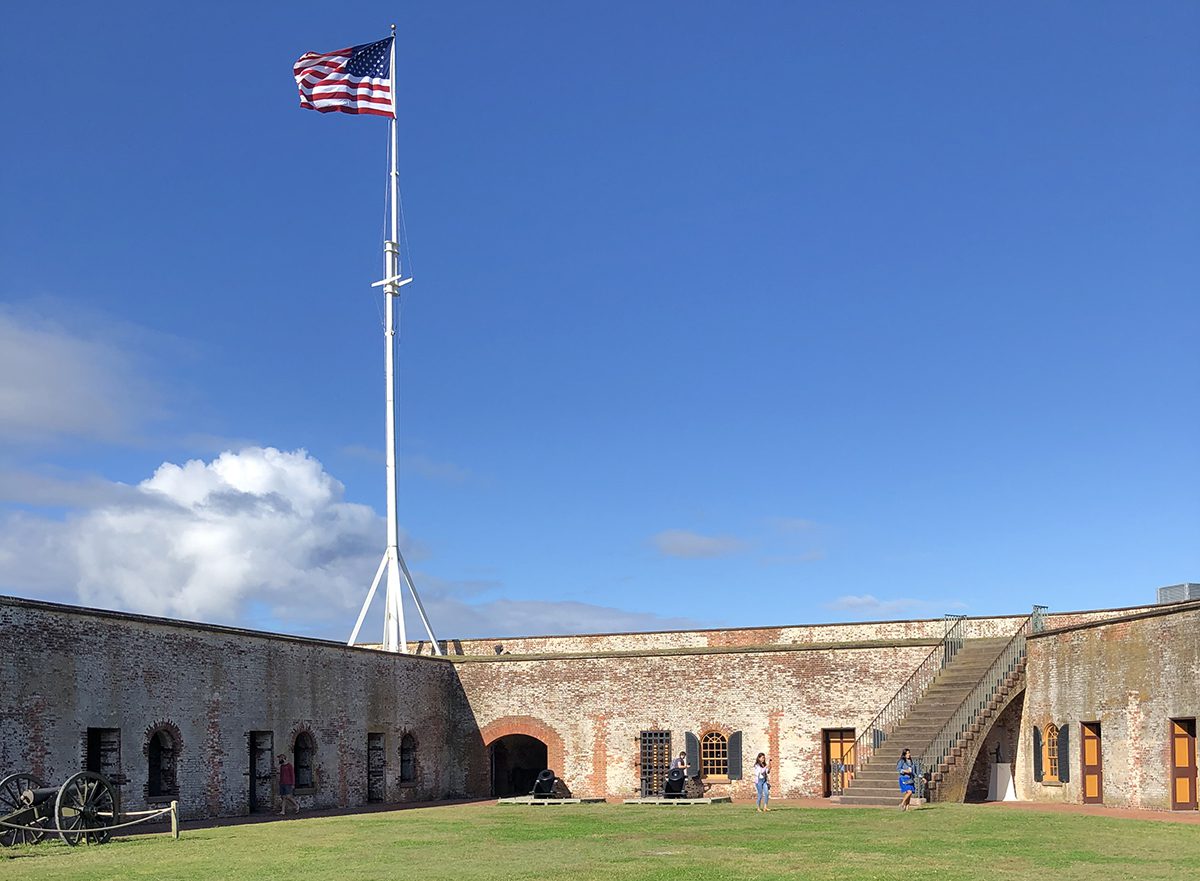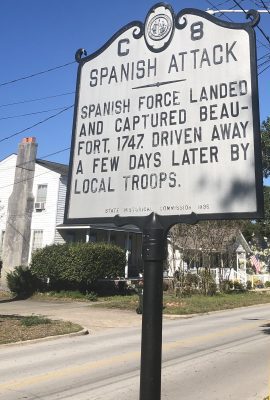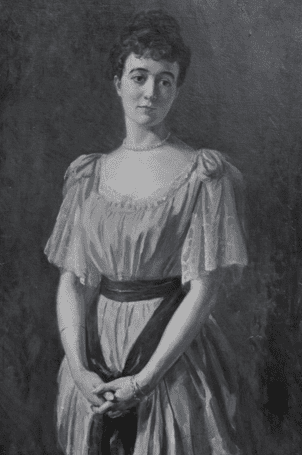
Part of a history series examining each of North Carolina’s 20 coastal counties.
The North Carolina coast has several regions of world-renowned beaches and barrier islands. They offer miles of sand, substantial hotels, and a full host of shops, restaurants, and sites available for tourists and residents alike.
Supporter Spotlight
Along with the Outer Banks to the north and the Wilmington-area beaches to the south, the Crystal Coast, a tourism marketing term coined in the 1980s, has gained recognition over the past century for its abundant amenities.
The term has since come to also include neighboring destinations, but it mainly refers to the beaches of Carteret County, one of the state’s oldest counties with history dating back three centuries. Its history has been defined by war, industrial development and the tourism boom that has shaped so much of society on the North Carolina coast.
Following the initial establishment of North Carolina on the Albemarle Sound, colonial settlers began to move south and west to find more areas for tobacco cultivation and trade. Many went to cultivate the rich soils along the Neuse River and, by the 1720s, the Cape Fear and Tar rivers. The settlers displaced native peoples throughout this process, including the Tuscarora and Core.
Some colonial families decided to stay along the coast and settle near inlets. One of these settlements was the future Carteret County seat of Beaufort, settled near Beaufort Inlet in the 1710s and incorporated in 1723. Beaufort was the colony’s fourth incorporated town. Carteret County itself was founded a year earlier and named for Sir John Carteret, one of the Lords Proprietors, according to historian and author David Leroy Corbitt.
Beaufort was a port town, a center for ocean trade and a stop for ships navigating through Beaufort Inlet. But the port was isolated from the rest of the more prosperous areas of the colony and remained small throughout its early years. The one exception to its sleepy early beginnings was in 1747, when the town was captured by the Spanish as part of the War of Jenkins’ Ear between Great Britain and Spain. Local militiamen retook the town three days later and ended the Spanish threat.
Supporter Spotlight

Outside of Beaufort, the area remained isolated and rural. The island of Bogue Banks, popular today for its many tourist attractions, was barely inhabited throughout the 18th and early 19th centuries. But on another barrier island here, one of the county’s earliest prosperous towns was Portsmouth, a town on Portsmouth Island near Ocracoke Inlet. The town had more than 500 residents in 1850 before losing most of them following the reopening of Hatteras Inlet in 1846. Portsmouth is now a ghost town and part of Cape Lookout National Seashore. The seashore also contains one of North Carolina’s tallest lighthouses, the Cape Lookout Lighthouse, originally built in 1804 and rebuilt in 1859.
On the mainland, communities such as Peletier and Broad Creek gained their first settlers in the 18th century. But rural isolation, the marshy environment, and a lack of large-scale shipping kept the inland population low. Carteret County had the second smallest population of any North Carolina county in 1790. The people who lived in the county supported themselves with shipping, agriculture and naval stores – pitch, tar and turpentine products harvested from the abundant pine forests.
Plantation agriculture and slavery were less prominent in this area than in surrounding counties. The 1860 census showed that 24.5% of Carteret County’s population was enslaved, the lowest percentage east of Moore County.
The mid-19th century brought an economic boost to Carteret County in the form of the North Carolina Railroad Co. Connecting the Piedmont and the coast, the new railroad was to have its eastern terminus in a new town. The tract that included what was then known as Shepard’s Point was platted as a grid design in 1854 and named Morehead City for its chief planner, John Motley Morehead, who had served as governor from 1841 to 1845. Morehead organized investors in the land development company, led the effort to raise private funding for the state-appropriated rail line and served as its first president.
Morehead City was incorporated Feb. 10, 1861. Meanwhile, the railroad also linked other Carteret County towns and communities, including Wildwood and Newport.
But the railroad and Carteret County’s strategic coastal location made it a prime target for the Union during the Civil War. The primary target was Fort Macon, which had been built in 1834 to protect the entry into Beaufort Inlet. Confederate troops stormed the nearly abandoned fort before North Carolina had even seceded, according to John G. Barrett. Less than one year later, Union forces landed at Hoop Pole Creek in present-day Atlantic Beach and captured the fort. The larger coastal area quickly fell to the Union. Farther inland, the Battle of Newport Barracks in February 1864 resulted in three Medals of Honor being awarded to a group of Union soldiers from Vermont.
The next 75 years were a time of steady growth and development in Carteret County. Its population nearly doubled between 1860 and 1920. An effort to designate Morehead City a state port began in the 1920s and culminated with a $7.5 million appropriation in 1949. Beaufort became a center for tourism and marine research as well as shipping and fishing. New funds into Beaufort from this growing prosperity led to the construction of a new courthouse for the county in 1907.
By the 1920s, Carteret County was becoming a tourist destination. The first bridge connecting Bogue Banks to the mainland was built in 1928 by a group of local investors who then sold the bridge to the state eight years later. The Morehead-Atlantic Beach bridge and the Emerald Isle-Cape Carteret ferry, which was replaced by a bridge in 1971, eventually led to hotels and fishing piers throughout the banks.

The central part of the Bogue Banks between Emerald Isle and Atlantic Beach received an early benefactor in 1917 when Alice Hoffman, a relative of Theodore Roosevelt, bought a large tract. Hoffman spent much of her life building up an estate on Bogue Banks and feuding with local fishermen, as noted in Kathleen McMillan Guthrie’s biography of Hoffman. The sale of Hoffman’s land after her death in 1953 led to considerable development and the eventual formation of the towns of Indian Beach and Pine Knoll Shores.
Growth on Bogue Banks occurred alongside development in other parts of the county. While Beaufort’s population remained small, it started to gain shops, restaurants and tourist attractions such as the North Carolina Maritime Museum. Newport’s population more than doubled in the 1960s, while the Down East communities such as Atlantic and Sea Level experienced growth and became centers for fishing and boating. Sea Level became the site for the national Snug Harbor Navy retirement facility, a home for retired merchant mariners that operated from 1976 to 2019. Newport was also aided by the construction of Marine Corps Air Station Cherry Point in nearby Havelock, for which it became a site for housing. Reflecting this development and its growing tourist reputation, the term “Crystal Coast” was introduced in the late 20th century to describe the towns and beaches of the area.
A number of remarkable people called Carteret County home in the 20th century. These included architect Bill Ransom Campbell, author Gerald R. Weeks, and Major League Baseball pitcher Lonnie Chisenhall, all from Morehead City. Other famous residents include Judge Algernon Marbley and Samuel Herring, singer of the band Future Islands. One famous Beaufort resident was Reginald Hawkins, civil rights leader and the first African American to run for governor of North Carolina. Another was Fairleigh Dickinson, a business leader who also became the namesake of Fairleigh Dickinson University in New Jersey. Michael J. Smith, the pilot of the Space Shuttle Challenger mission, which exploded soon after takeoff in 1986, was also from Beaufort.
Today, Carteret County is one of the centers for tourism in coastal North Carolina. There are dozens of well-known restaurants, recreational facilities, and hotels on Bogue Banks and elsewhere. Earlier this year, Food Network personality Guy Fieri filmed his family reunion special in the county, touring several of its restaurants and markets. Beaufort has won numerous “best small town” awards in the past decade, most notably one from Travel and Leisure magazine in 2014.








